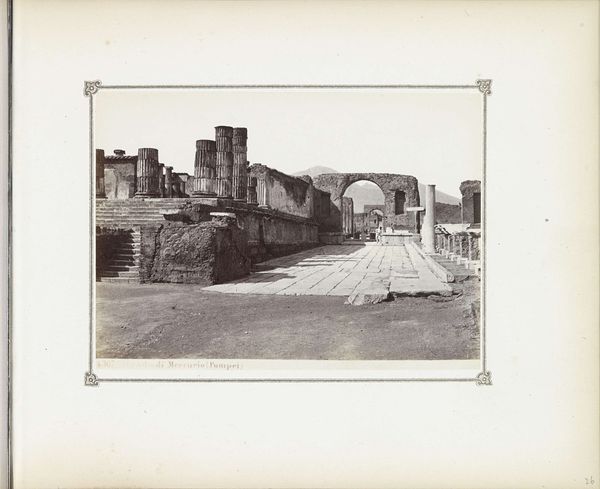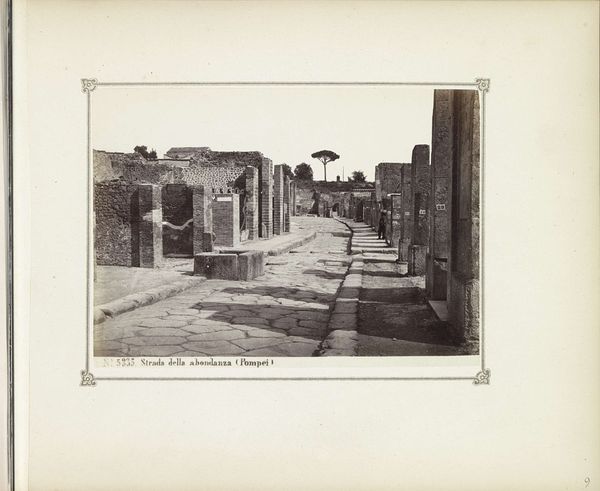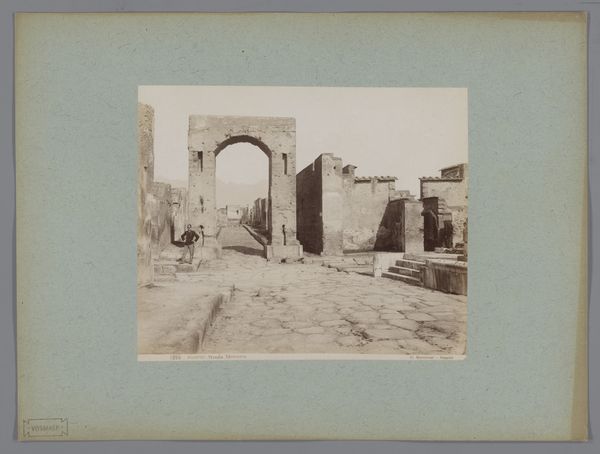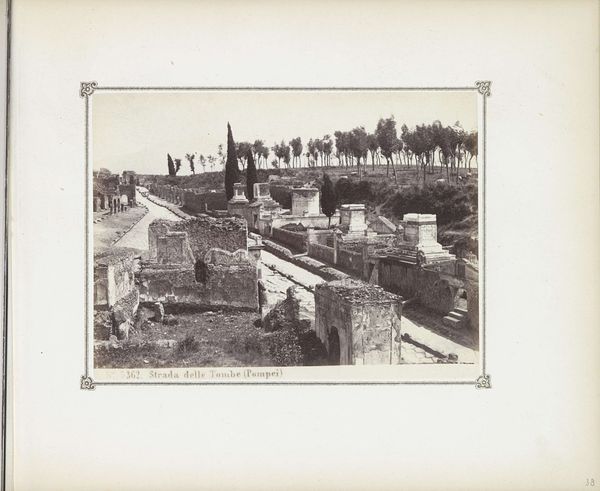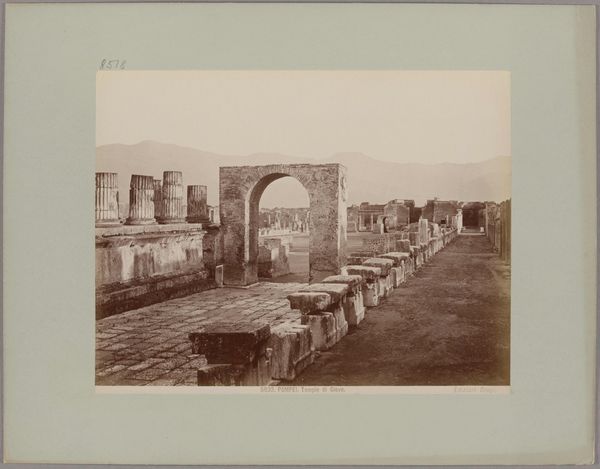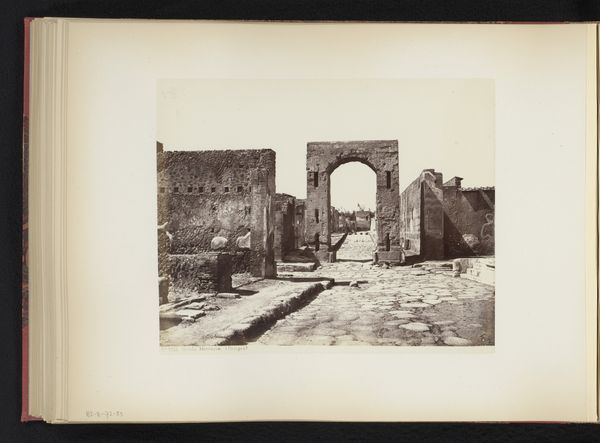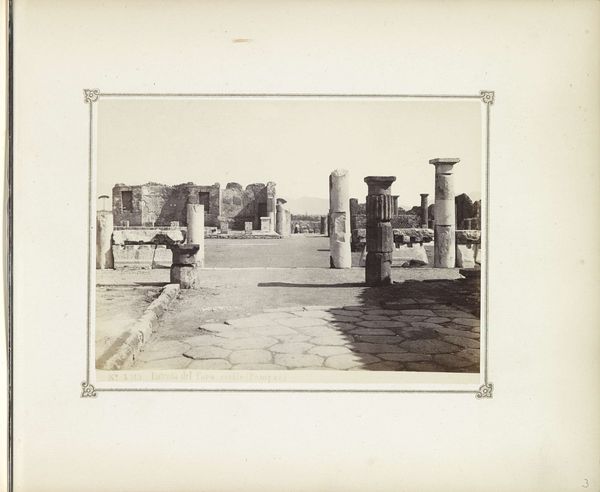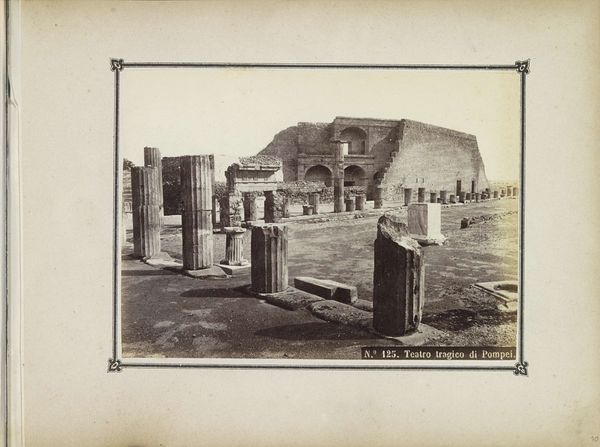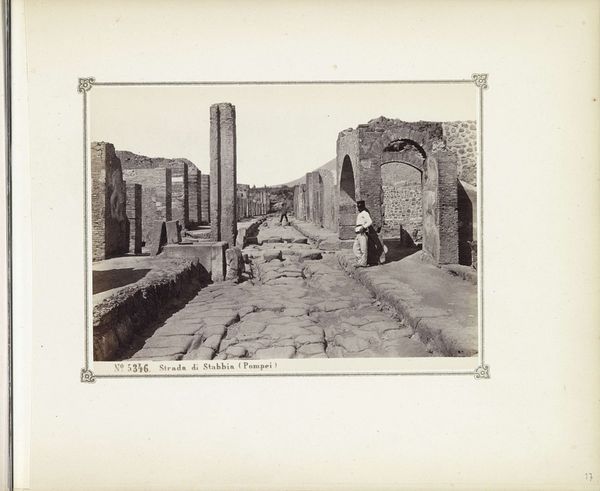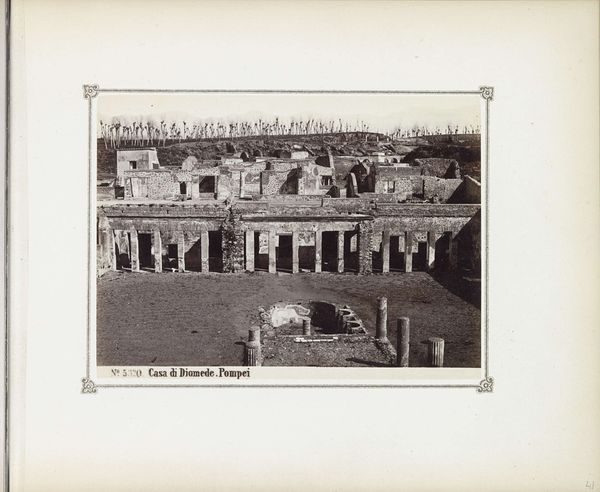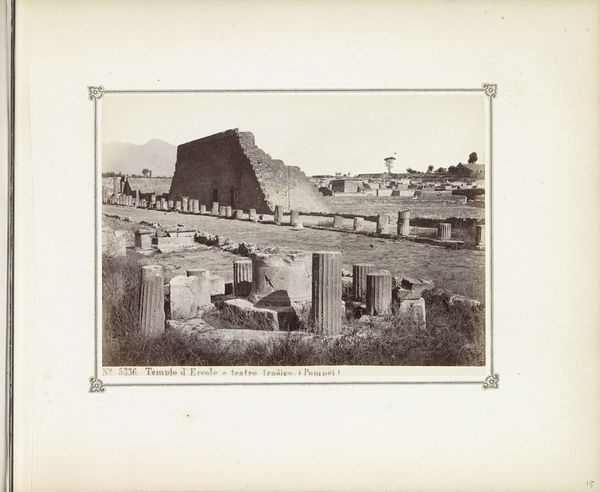
photography, albumen-print
#
landscape
#
photography
#
ancient-mediterranean
#
albumen-print
Dimensions: height 101 mm, width 142 mm
Copyright: Rijks Museum: Open Domain
Curator: Here we have Giorgio Sommer's photograph, "Gezicht op restanten van het forum te Pompeï," taken sometime between 1860 and 1900. Editor: The desolation strikes me immediately. Look at those worn stones, arranged so neatly despite everything. Curator: Indeed, Sommer's work here allows us to consider the evolution of archaeology and tourism in the 19th century. Pompeii became a key site for European elites. Photography played a pivotal role in disseminating those findings. Editor: Absolutely. The albumen print technique emphasizes the textures and subtle tonal variations. Consider the labor-intensive darkroom processes, the social expectation for accuracy driving every decision. And the frame almost "gilds" these workingman artifacts. Curator: The photograph romanticizes these Roman ruins, contributing to a visual culture that linked Europe's imperial ambitions with those of ancient Rome. It was vital for wealthy collectors who saw these ancient places through carefully curated lens. Editor: Right. The way the photographer focuses down the pathway directs your gaze back to ancient modes of control that later would get consumed, bought, and sold to shape ideas about civilization itself. What’s captured gets extracted of use or function in society. Curator: However, Sommer also aimed to cater to a growing market for souvenir photographs, making these distant ruins accessible to a wider audience than ever before. These are things to purchase. Editor: I keep returning to the texture of the stones themselves. Imagine the sheer physical labor involved in shaping them centuries ago. Now the shadow shapes imply something completely different is emerging. Curator: And to contemplate their original social function, and how it differs to today. It becomes an object of desire to reinforce a narrative. Editor: It certainly puts our present-day preoccupations in perspective. Curator: An amazing snapshot through time, then and now.
Comments
No comments
Be the first to comment and join the conversation on the ultimate creative platform.

